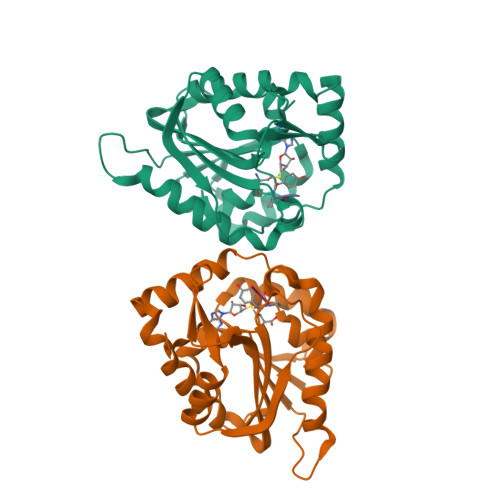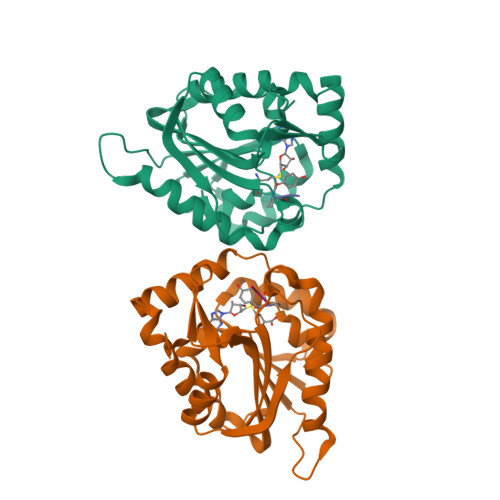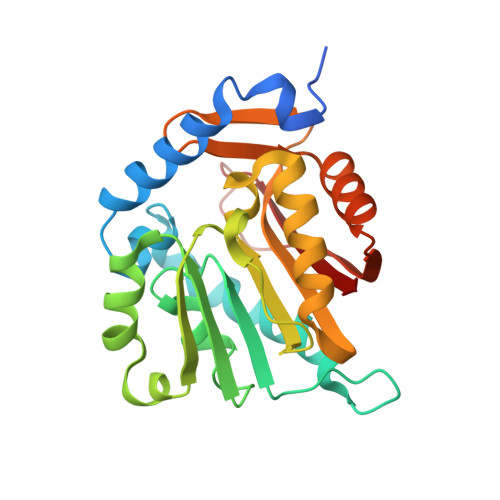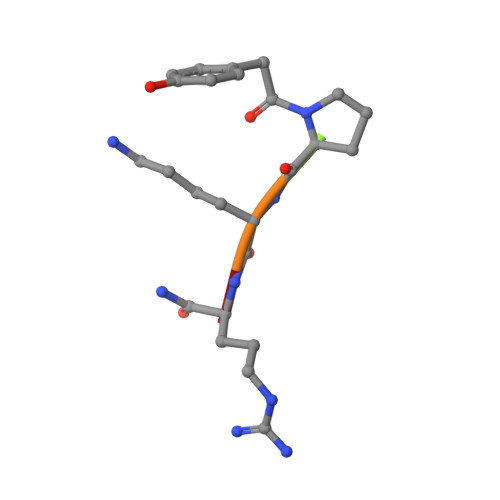Selective Peptidomimetic Inhibitors of NTMT1/2: Rational Design, Synthesis, Characterization, and Crystallographic Studies.
Mackie, B.D., Chen, D., Dong, G., Dong, C., Parker, H., Schaner Tooley, C.E., Noinaj, N., Min, J., Huang, R.(2020) J Med Chem 63: 9512-9522
- PubMed: 32689795
- DOI: https://doi.org/10.1021/acs.jmedchem.0c00689
- Primary Citation of Related Structures:
6WH8 - PubMed Abstract:
Protein N-terminal methyltransferases (NTMTs) methylate the α-N-terminal amines of proteins starting with the canonical X-P-K/R motif. Genetic studies imply that NTMT1 regulates cell mitosis and DNA damage repair. Herein, we report the rational design and development of the first potent peptidomimetic inhibitor for NTMT1/2. Biochemical and cocrystallization studies manifest that BM30 (with a half-maximal inhibitory concentration of 0.89 ± 0.10 μM) is a competitive inhibitor to the peptide substrate and noncompetitive to the cofactor S-adenosylmethionine. BM30 exhibits over 100-fold selectivity to NTMT1/2 among a panel of 41 MTs, indicating its potential to achieve high selectivity when targeting the peptide substrate binding site of NTMT1/2. Its cell-permeable analogue DC432 (IC 50 of 54 ± 4 nM) decreases the N-terminal methylation level of the regulator of chromosome condensation 1 and SET proteins in HCT116 cells. This proof-of principle study provides valuable probes for NTMT1/2 and highlights the opportunity to develop more cell-potent inhibitors to elucidate the function of NTMTs in the future.
Organizational Affiliation:
Department of Medicinal Chemistry, Institute of Structural Biology, Drug Discovery and Development, School of Pharmacy, Virginia Commonwealth University, Richmond, Virginia 23298, United States.



















